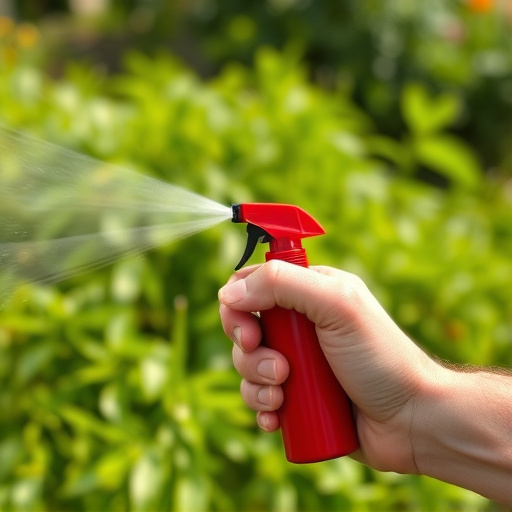Learn vital Pepper Spray Decontamination Steps at Home to mitigate discomfort and speed recovery after exposure. This includes rinsing with water, using neutralizing solutions, changing clothing, proper canister storage, regular cleaning, and safe disposal. Understand local laws and safety precautions for possession, use, and storage of pepper spray, and know decontamination procedures in case of accidental discharge.
Personal security is a growing concern, making pepper spray canisters an increasingly popular self-defense tool. This guide delves into the essentials of understanding and utilizing these devices effectively. From choosing the right canister for your needs to learning proper storage and decontamination steps at home, we cover everything you need to know. Additionally, we explore legal considerations and safety precautions to ensure responsible use.
- Understanding Pepper Spray Canisters
- Choosing the Right Personal Security Device
- Proper Storage and Maintenance Techniques
- Effective Decontamination Steps After Use
- Legal Considerations and Safety Precautions
Understanding Pepper Spray Canisters
Pepper spray canisters are powerful tools designed for personal security, offering a non-lethal way to defend against potential threats. Understanding how to use and decontaminate them properly is crucial for ensuring their effectiveness in emergency situations.
After an encounter, following specific pepper spray decontamination steps at home is essential to minimize irritation and discomfort. This process typically involves rinsing the affected areas with water, applying neutralizing solutions or baking soda pastes, and changing into clean clothing. It’s important to know that immediate decontaminating actions can help reduce the impact of pepper spray, making recovery faster and more comfortable for the individual.
Choosing the Right Personal Security Device
Choosing the right personal security device, like a pepper spray canister, is an essential step in enhancing your safety and peace of mind. When selecting a pepper spray, consider factors such as range, strength, ease of use, and decontamination steps at home. Opt for a canister with a good range to allow distance during potential threats, and choose one that offers sufficient force to incapacitate an attacker temporarily.
Additionally, familiarize yourself with the decontamination process after using pepper spray. Have a plan in place to ensure proper disposal or neutralization of the canister and any residual chemicals. Regularly clean your living spaces by ventilating areas, using wet cloths or vacuum cleaners to remove any trace elements, and properly disposing of contaminated items to maintain a safe environment at home.
Proper Storage and Maintenance Techniques
Proper storage and maintenance are key to ensuring your personal security inflammatory spray canister remains effective and ready when needed. Store the canister in a cool, dry place away from direct sunlight or extreme temperatures. Heat can cause the pepper spray to degrade faster, while moisture can affect its performance. Keep it out of reach of children and unauthorized individuals, preferably locked up for added safety.
Regular decontamination is also crucial. Pepper spray can build up on surfaces over time, losing its potency. Follow recommended decontamination steps at home by wiping down the canister and its components with a damp cloth after each use or periodically to remove any residue. Store it in a sealed bag when not in use to prevent contamination from airborne particles or environmental debris that could compromise its effectiveness.
Effective Decontamination Steps After Use
After using a pepper spray canister, proper decontamination steps are crucial to ensure safety and prevent any potential lingering effects. Start by quickly moving to a safe, well-ventilated area away from the immediate vicinity where the spray was deployed. Remove any clothing or items that may have come into direct contact with the spray, placing them in a sealed plastic bag for later disposal.
For decontamination, mix one cup of water with two tablespoons of white vinegar in a large container. Soak any affected areas of skin or clothing in this solution for at least 15 minutes. Rinse thoroughly with clean water afterwards, ensuring no residue remains. For eye exposure, flush gently with water for at least 15 minutes, keeping the eyes open. Seek immediate medical attention if irritation persists or symptoms worsen.
Legal Considerations and Safety Precautions
When carrying a pepper spray canister for personal security, it’s crucial to understand legal considerations and safety precautions. Each jurisdiction has its own regulations regarding the possession, use, and storage of pepper spray. Always check local laws to ensure compliance; failure to do so could result in fines or other penalties. Safety precautions are equally vital. Proper handling involves storing the canister out of reach of children and pets, keeping it sealed until needed, and understanding decontamination steps at home. In case of accidental discharge, quickly move to a well-ventilated area, wash affected areas with soap and water for at least 15 minutes, and seek medical attention if irritation persists.
A personal security inflammatory spray canister, like pepper spray, can be a powerful tool for self-defense. By understanding its mechanics, selecting the right device, and implementing proper storage and maintenance, you can ensure its effectiveness. Moreover, knowing effective decontamination steps after use is crucial to minimize health risks. Always stay informed about legal considerations and safety precautions to use your pepper spray responsibly and securely. For those seeking practical guidance on pepper spray decontaminations at home, these steps are an essential addition to your personal security arsenal.
